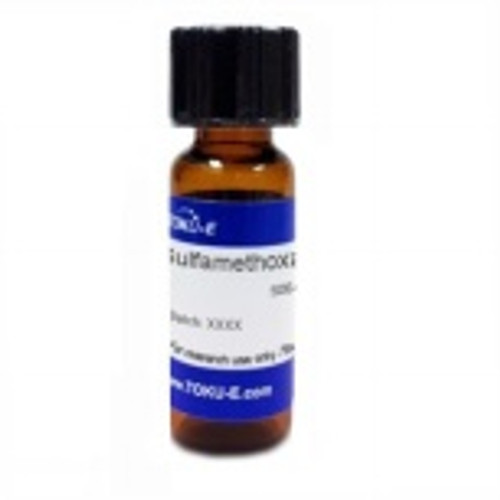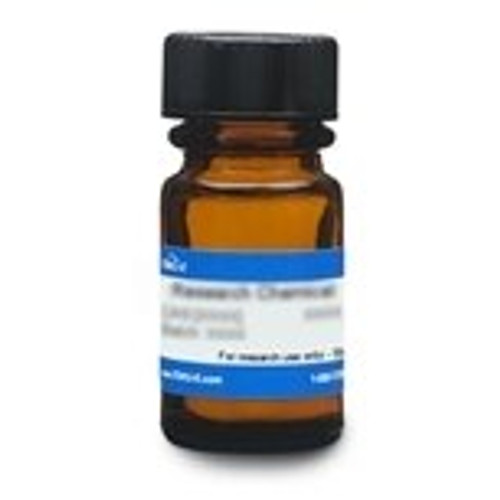Sulfamethoxazole Sodium is a broad-spectrum bacteriostatic sulfonamide antibiotic belonging to the sulfanilamide family. It was first synthesized in 1957 by Shionogi Inc. in Japan, launched as Sinomin by Shionogi Inc. in 1959, and introduced to the US in 1961. Sulfamethoxazole is normally given in combination with Trimethoprim, a dihydrofolate reductase inhibitor, which inhibits the reduction of dihydrofolic acid to tetrahydrofolic acid. Studies have shown that bacterial resistance develops more slowly with the combination of the two compounds than with either Trimethoprim or Sulfamethoxazole alone.
It is effective against bacteria causing urinary tract infections, bronchitis and prostatitis.
We also offer:
- Sulfamethoxazole (S045)
- Sulfamethoxazole related compound A, EvoPure (S063)
- Sulfamethoxazole related compound B, EvoPure (S064)
| Mechanism of Action | Sulfonamides, like Sulfamethoxazole, inhibit the enzymatic conversion of pteridine and p-aminobenzoic acid (PABA) to dihydropteroic acid by competing with PABA for binding to dihydrofolate synthetase, an intermediate of tetrahydrofolic acid (THF) synthesis. THF is required for the synthesis of purines and dTMP and inhibition of its synthesis inhibits bacterial growth. Since folic acid acid is not naturally synthesized in humans, it is non-toxic. Resistance is due to mutations in the enzymes for folic acid synthesis. |
| Spectrum | Sulfamethoxazole, like other sulfonamides, is a broad-spectrum antimicrobial inhibiting both Gram-positive and Gram-negative bacteria, as well as some protozoa, such as coccidia. They are considered ineffective against most obligate anaerobes and should not be used for serious anaerobic infections. However, they may affect aerobic organisms that contribute to the lowered oxygen tension in the microenvironment and, as such, they may be useful in certain diseases involving Fusobacteria, although the organism itself is often resistant. Sulfamethoxazole has shown activity against Chlamydia trachomatis, Listeria monocytogenes, and E. coli. |
| Microbiology Applications | Sulfamethoxazole (SMX) is commonly used in clinical in vitro microbiological antimicrobial susceptibility tests (panels, discs, and MIC strips) against Gram-positive and Gram-negative microbial isolates. Medical microbiologists use AST results to recommend antibiotic treatment options. Effective ranges include:
For representative list of Sulfamethoxazole MIC values, click here. Sulfamethoxazole can be added to Muller Hinton II agar for antibiotic susceptibility testing protocols. |
| Plant Biology Applications | The sulfanilamide family include compounds which also display bioactivity in plants. There is evidence that sulfanilamides inhibit folate biosynthesis in plants, but the complete network of plant responses to these compounds remains to be characterized. Genetic screening using Arabidopsis seedlings identified mutants with altered sensitivity to sulfamethoxazole. Subsequent mapping indicated that a gene encoding 5-oxoprolinase was responsible, suggesting that the compound's response is not limited to the disruption of folate biosynthesis (Schrieber et al, 2012). |
| Molecular Formula | C10H10N3NaO3S ∙ Na |
| References |
Henry RJ (1943 The mode of action of sulfonamides. Bacteriol. Rev. 7(4):175-262 PMID 16350088 Schreiber, KJ et al (2012) Forward chemical genetic screens in Arabidopsis identify genes that influence sensitivity to the phytotoxic compound Sulfamethoxazole. BMC Plant Biol. 12:226 PMID 23176361 |











